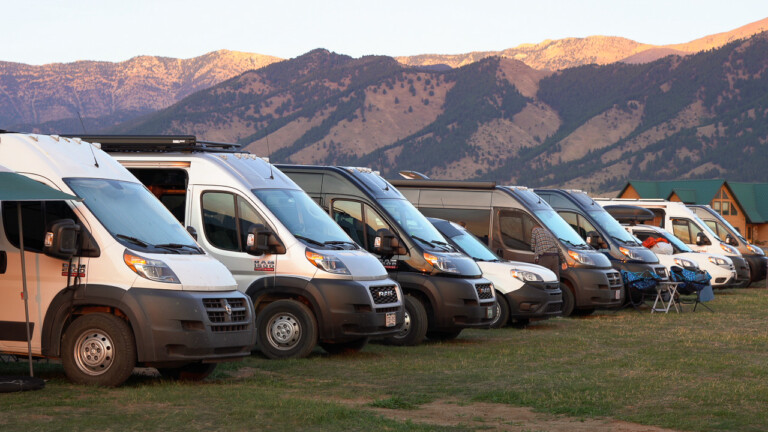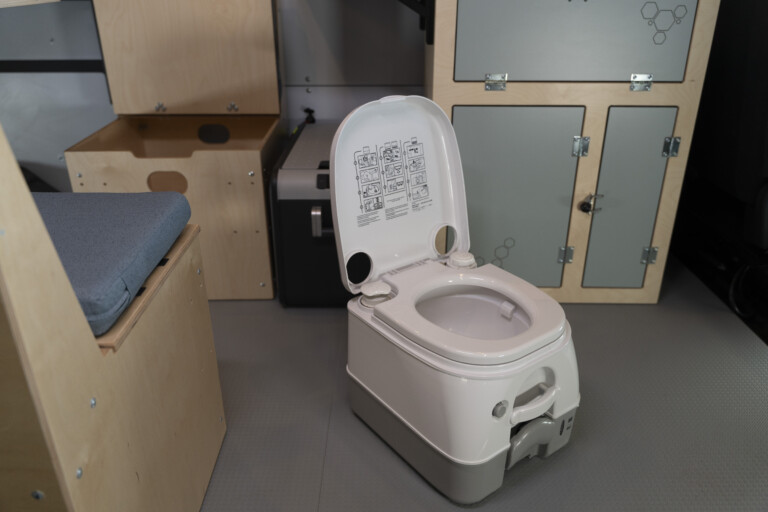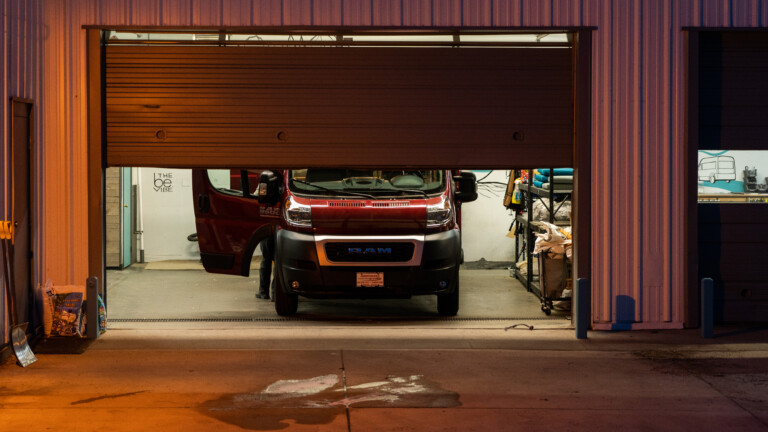Get ready for one of our least entertaining blogs, but also one of the most helpful: how to insure your camper van.
Insurance ranks right up there with taxes and dental cleanings as an unavoidable part of adulting. But insurance isn’t just a box to check. It’s your safety net. The right coverage ensures you can repair or replace your van if something unexpected happens.
If you spend time on the Wayfarer Vans Fan Page on Facebook (which you absolutely should), you’ve probably seen camper van insurance questions come up more than a few times. With over 1,000 Wayfarer Vans on the road, and Wayfarians in nearly all 50 states, we’ve seen it all when it comes to insurance. And we’re here to help make sense of it.
So, why is insuring a camper van a bit complicated?
- Insurance requirements and options vary a lot from state to state.
- Not all insurance agents or customer service reps are up to speed on camper vans. You may get different answers from the same company.
- There are multiple types of coverage to choose from, which is great. But it can also make the process feel overwhelming.
What Our Survey Results Say
We asked the Wayfarian community and got nearly 100 responses about camper van insurance. (If you are a fan of Family Feud, cue your best Steve Harvey voice here). And the survey results say:
- Over 50% of Wayfarians are insured through Progressive, State Farm or Roamly.
- 55% of folks insure their van as a regular vehicle rather than an RV.
- 12% carry an additional policy to cover the conversion or equipment.
- More than 60% pay $100 or less a month for coverage.
- Van owners rated the ease of getting insurance at an average of 2.9 on a 1-10 scale (with 1 being very easy). Nearly half said it was extremely easy, while only 5% found it to be extremely difficult.
Vocab Lesson
Let’s sort out a few of the terms you’ll hear when shopping for insurance coverage:
- Liability coverage: Covers damage or injuries you might cause to others. This is legally required in most states.
- Collision coverage: Helps repair your van if it’s damaged in an auto accident.
- Comprehensive coverage: Covers non-collision events like theft, vandalism, hitting a deer or weather-related damage.
- Personal belongings: Protects items inside your van – especially important for those living in their vans full-time.
- Fair Market Value: Covers the current value of your van, factoring in depreciation. This is generally the less expensive option, but it may leave you with less than what you’d need to replace your van if something happens.
- Replacement Value: Provides coverage to replace your van with a similar one, even if it costs more than its current market value. While this option typically comes with a higher premium, it can offer peace of mind, especially given that camper vans often hold their value better than traditional vehicles.
Is there a gray area?
Yes and no! Regulations depend on your state and insurer, and if you want auto or RV insurance (more on that below). While honesty is always the best policy (seriously, insurance fraud is no joke), a solutions-oriented mindset can help make the process easier.
For example: does your policy require a bathroom? Your Wayfarer Vans conversion won’t include a tiled shower or vanity, but you can add our portable toilet accessory to meet the requirement. Or, does the policy require a working stove? While our vans don’t come with a five-burner range and oven, you can easily permanently affix a camping stove to your kitchenette to check that box.
Auto Insurance vs RV Insurance
This can be one of the most confusing differentiators, and it can have a big impact on the cost of your plan. Let’s break it down:
Auto Insurance: A standard auto insurance policy covers the vehicle itself in case of an accident, theft, or damage, depending on your plan. However, many will not cover the conversion or anything inside the van without an additional policy.
RV Insurance: This type of policy provides additional coverage for the conversion itself, as well as the personal belongings inside. In some cases, RV insurance can also offer liability protection for when you’re parked and using the van as a living space, which auto insurance typically won’t cover. Note, RV insurance may require proof of certain interior features including a toilet or stove.
Full time vs. Part Time
Even with the same van, your coverage can change depending on whether you’re using it full-time or part-time. Most insurance companies define “full-time use” as living in your van as your primary residence for six months or more out of the year.
Full-time insurance often includes additional protections, like increased liability coverage and higher limits for personal belongings. If your van is your full-time home, this can be especially important. However, check the policy details, some full-time policies cap personal article coverage at $5,000. That might sound like a lot, but two smartphones, a laptop, and some outdoor equipment could eat up that amount very quickly.
** Quick Tip** One of our Wayfarians saved several hundred dollars a year by switching their car insurance to “storage mode” or “parked car insurance” during the four to five months they travel exclusively in their Wayfarer Van. They used State Farm in Nevada, but check with your agent to see if this option works for your extended trips.
Where Should You Start?
With so many options, let’s keep it simple. If you’re shopping for camper van insurance before getting your camper van, which we recommend, start with these three steps:
- Check with your current auto, home, or renters insurance provider to see what they offer for camper van coverage.
- Compare rates from popular camper van insurers like Progressive, State Farm, and Roamly.
- Set up your insurance policy to start on the day your van leaves the dealership lot. Make sure to get proof of insurance, such as digital or emailed insurance cards, so you’re covered the moment you hit the road.
Other Things to Consider
- Valuing a Wayfarer is easier than DIY: You can declare the value of a Wayfarer Van more easily than a DIY build. Which is why it is important to distinguish that your conversion was installed by a professional crew and not your Uncle Billy with his scrap lumber. You can prove your conversion’s worth with your Wayfarer invoice.
- Document any extra accessories or DIY upgrades you’ve added. Taking photos of your van, both interior and exterior, is always a good idea to have on file for reference. With clear documentation, insuring your Wayfarer is a smooth process.
- International Coverage: Planning a drive through Canada? A winter escape to Baja? An epic expedition to South America? Check with your provider to confirm what’s included and whether you’ll need additional coverage for international travel, as not all policies extend beyond U.S. borders.
- Renting Out Your Van: Thinking about renting out your van on platforms like Outdoorsy? Keep in mind that doing so can void many standard insurance policies. The only provider we know of that specifically allows for peer-to-peer rentals through these platforms is Roamly. If you’re considering this option, it’s worth looking into their policies to ensure you’re properly covered.
- Review Your Policy Regularly: Once you’ve secured insurance, don’t just set it and forget it. Whether you’ve added new gear, made upgrades to your van, or started using it differently, keep your policy updated to make sure you’re fully covered.
Don’t Forget to Lean On Your Friends
The Wayfarian community shares a wealth of information on the Facebook Vans Fans Group and always offers helpful advice. If you are running into roadblocks, search the page for others from your state and see what worked for them. We asked our Wayfarians what advice they would give folks looking for camper van insurance, and they had some gems to share:
- “Make sure you disclose every customization and part you have put into your van including the build and confirm it is covered when you sign up for insurance.”
- “Get an independent agent who has access to different companies to get the best option for you.”
- “Every company has their own definitions of what your cargo van is and whether or not they will insure it. Also inquire if it would benefit you to convert to an RV policy if the van meets their requirements. It’s probably going to take a few phone calls.”
- “Use your homeowners policy to insure the Wayfarer build components. My agent said that was okay since the pieces were viewed as not a custom interior and could be replaced on an item by item basis.”
- “I suspect that the call centers default to the quick and easy way (for them). That they’re almost eager to decline and move onto something else. So perhaps the key is to find a local agent, maybe a small business owner, who’s more interested in getting some business. More interested and importantly, more experienced.”
Camper van insurance might not be the most exciting part of van life, but securing the right coverage protects your investment and gives you peace of mind. With a little research and the right questions, you’ll be ready to hit the road knowing you’re covered.


